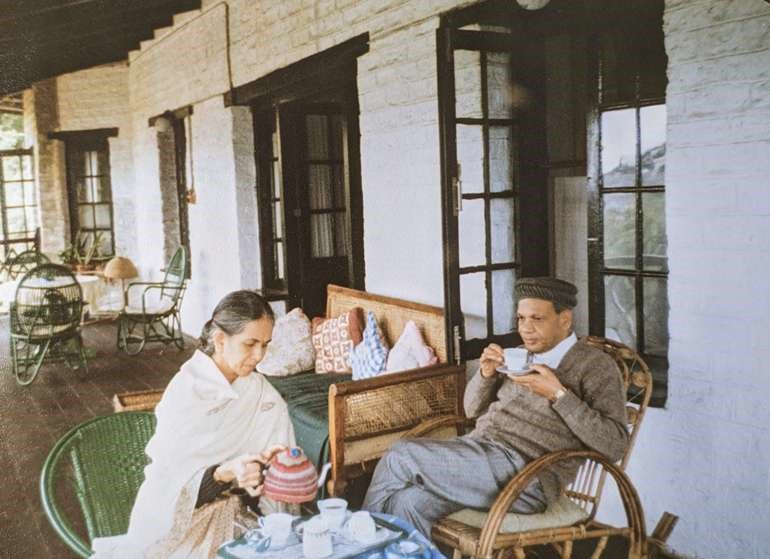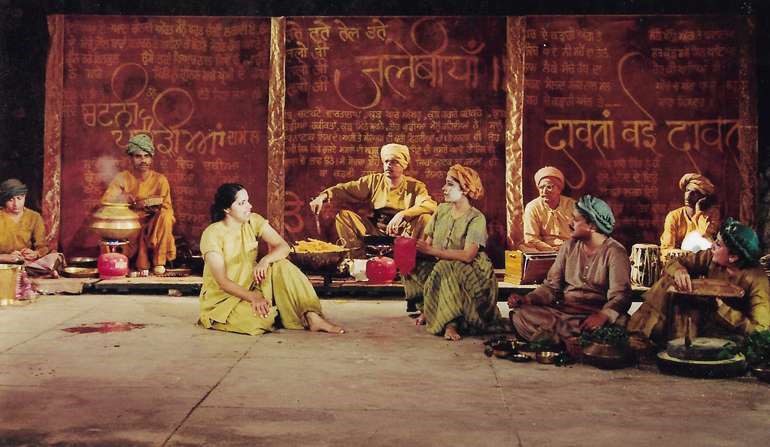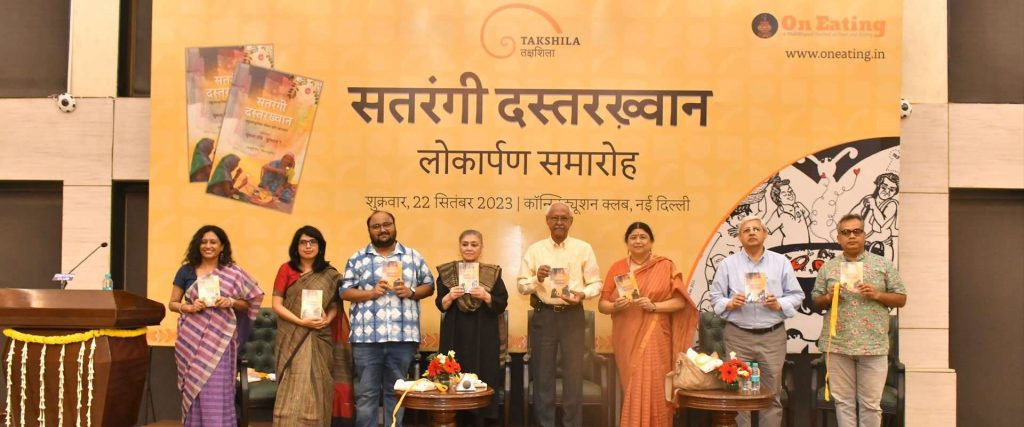Debadrita Saha: I will begin with an apparently banal, but perhaps the most pertinent question one can ask an editor of a magazine on food and eating, given the socio-political circumstances of India at this moment. Born out of the turbulent times of the pandemic, and that too when food vigilantism is rampant, how does the magazine’s mission to create “an archive of various eating cultures” in the Indian subcontinent govern your editorial approach?
Kunal Ray and Sumana Roy: There is a culture of vigilantism about everything – what we wear, what we say, whom we love, whom we don’t like, in the classroom as much as there is on the street and in the kitchen. Yet we continue to do what we want to do, often unconsciously, because we don’t know otherwise. On Eating emerged from the desire to create an archive of eating cultures, and the decision to include all kinds of genres – the essay, the poem, the story, audio-visual work, graphic narratives – was also to enable this, that imagination and fantasy might often be able to hold in it something that a contemporary ‘historical tract’ cannot. I think just as we feel free to eat whatever we like to, On Eating feels like an extension of our tongue. We won’t allow censorship in any form.

DS: When I first started reading On Eating, I was drawn to its layout, which straddles a fine line between little magazines and global entertainment periodicals on food. Is that the primary reason the two of you chose the term “genre-agnostic”, to encapsulate the magazine’s essence?
KR and SR: ‘Genre-agnostic’ is a term that we were forced to use to explain our politics and our ambition. We don’t believe in the market distinction between genres. Also, the idea of genre, say, of the kind you mention to draw this binary between little magazines and ‘entertainment periodicals’, is something we would like to protest against. Both of us love to eat, and we don’t like our food classified into genres. We like odd – and unexpected – food combinations. The stomach doesn’t care for the divisions on a menu card. And so with the character of writing in On Eating. Many of these – if not most – essays are by non-professional writers; we wanted to archive this voice that cooks and eats and savours and sweats and delights and curses. Establishment food magazines have no space for this kind of amateur food writing. We believe that an honest food history is to be found in these records.
DS: With the advent of social media platforms like Instagram and Tumblr, which largely propagate certain aestheticized versions of cultural history, food writing has become an established internet subculture with terms like “gourmet” and “foodie” and “exotic palates” being the buzzwords. As editors of a digital magazine on food and eating practices, how would you acknowledge or distinguish “On Eating” from this trend?
KR and SR: We dislike it, we’ve spoken against it on other forums (https://www.youtube.com/watch?v=T5tnXs3fKPw). We are not curating prettified food, no. If we could have a subtitle for our journal, it would be ‘On Eating: Not Trending’. Our impulse and temperamental investment is in the everyday, and that is the archive we want to build. If we ever have anything ‘exotic’ or ‘trending’ in our magazine, it would, in all likelihood, be about why banana bread and Dalgona coffee became the rage during the Covid 19 lockdown, for instance, or why certain kinds of food are being exoticised. You wouldn’t have found the kind of vocabulary you mention above in our journal. We’ve survived without hashtags so far.
DS: Which brings me to my next question. Could you please walk me through the editorial process, from gathering submissions, to ensuring affective/emotionally potent collaborations between writers, artists and other creative voices?
KR and SR: Submissions come through the submission email address given on our website. Kunal reads them first and shares them – along with his opinion – with Sumana. They take a decision, following which Kunal writes to the writers informing them about acceptance or rejection. Sumana usually edits it, Kunal edits it before sharing it with the contributor, after which there is a back-and-forth of copyedits. Kunal schedules it, commissions artwork and sends it to translators, and sees it through the publishing process. Kunal does most of the work – he reaches out to possible contributors, both writers and artists, in an indefatigable manner. The journal owes its life – and health – to Kunal.
We are a team of two and are able to publish only one text every month. This means that there is often a long gap between submission and publication. Our contributors have been extremely patient with us, for which we are, of course, grateful.
DS: Multingualism is another distinguishing feature of the journal to maintain diversity, and to foster adequate representation of the concept. What factors contributed to the growth and decision-making of the editorial process of the magazine?
KR and SR: This was one of the first things we agreed on – it seemed natural, this multilingualism. An extension of our tongue – omnivorous with both food and language. We are limited by the number of languages we speak and read in, but we have also been fortunate – again this owes to Kunal – to have had a team of excellent translators who have also advised us about the quality and character of the writing. Our ambition isn’t bureaucratic – not UN-like representation – but natural to our temperaments: we love the sound of food as much as we love its taste. More languages will naturally mean more kinds of eating cultures, right?

अमृतसर का अमृत–भोज
DS: Since we are talking about linguistic pluralism, could you please elaborate the choice to publish your anthology of selected essays in the name of Satrangi Dastarkhan, in Hindi?
KR and SR: Rajkamal Prakashan was very enthusiastic about the idea when they were approached by Takshila Education Society, who funds On Eating. Kunal was familiar with their work in the arts, particularly in setting up museums and their genuine interest in art and architecture. They support a wide range of arts-based initiatives. He approached them, we were asked to write a proposal, which we did, like school students, and it was accepted. Then a presentation followed and we were informed of their support. We have been extraordinary fortunate to have their support. On Eating wouldn’t exist without them – they pay our contributors and the upkeep of the website. Most importantly, there has never been any kind of censorship or interference from Takshila Education Society. So, we were happy that our contributors could meet inside a book and find a new readership.
https://rajkamalprakashan.com/satrangi-dastarkhwan.html
DS: Are you planning to publish it in other languages as well? If so, how do you think the response is going to be?
KR and SR: Do you mean the book? We would love to. All of this, as you realise, is dependent on funds, publishers, editors and so on, things outside our control. If it happens as naturally as Satrangi Dastarkhan happened, we would be delighted.
DS: The journal is said to be an initiative of Takshila Educational Society. I think our readers would be more than interested in learning about the funding procedure behind this creative research project. What requirements did the funding body have?
KR and SR: Kunal was familiar with their work in the arts, particularly in setting up museums and their genuine interest in art and architecture. He approached them, we were asked to write a proposal, which we did, like school students, and it was accepted. We have been extraordinarily fortunate to have their support. On Eating wouldn’t exist without them – they pay our contributors. Most importantly, there has never been any kind of censorship from Takshila Education Society.

DS: Speaking of the readership of this journal, I am curious as to how, despite being academics, you managed to preserve an archive that is relatively free from the complexity of esoteric jargons that academia has become notorious for? Does the autobiographical nature of the pieces featured in the magazine contribute to its wide accessibility, and acceptance?
KR and Sumana Roy: We are both accidental academics – our interests and investments are in human relationships, in eating, in music and the arts, in laughter, in joy, in being moved to action, in protecting who and what we hold dear. Our compulsive choice of idiom is the demotic; we don’t speak academese. We knew, right from the beginning, that we wanted our contributors and our readers to come from a similar space – that there was to be no hierarchy of the sabjanta, the know-all, that separates writer from reader. We like that liveliness of the everyday – that anyone can write for us, and that anyone can read us.
Sumana Roy is the author of How I Became a Tree, a work of non-fiction, Missing: A Novel, My Mother’s Lover and Other Stories and two poetry collections, Out of Syllabus and V.I.P: Very Important Plant. She tries to live mostly in Siliguri.

Kunal Ray writes about art and culture for a variety of publications. He co-edited Shabd aur Sangeet – Unravelling Song-Text in India (2019). He teaches literary and cultural studies at Flame University, Pune.

Debadrita Saha is a full-time PhD scholar at Ashoka University and an intersectional ecofeminist, but not necessarily in that order. Her entry into academic activism was inspired by bell hooks, Jasbir Puar, and Sara Ahmed. When she is not launching into anti-patriarchal polemic, her epicurean soul finds solace in Scotch on the rocks, charcuterie boards and _Les Diaboliques_’ noirish charms.

Subscribe to our newsletter To Recieve Updates
Join our newsletter to receive updates